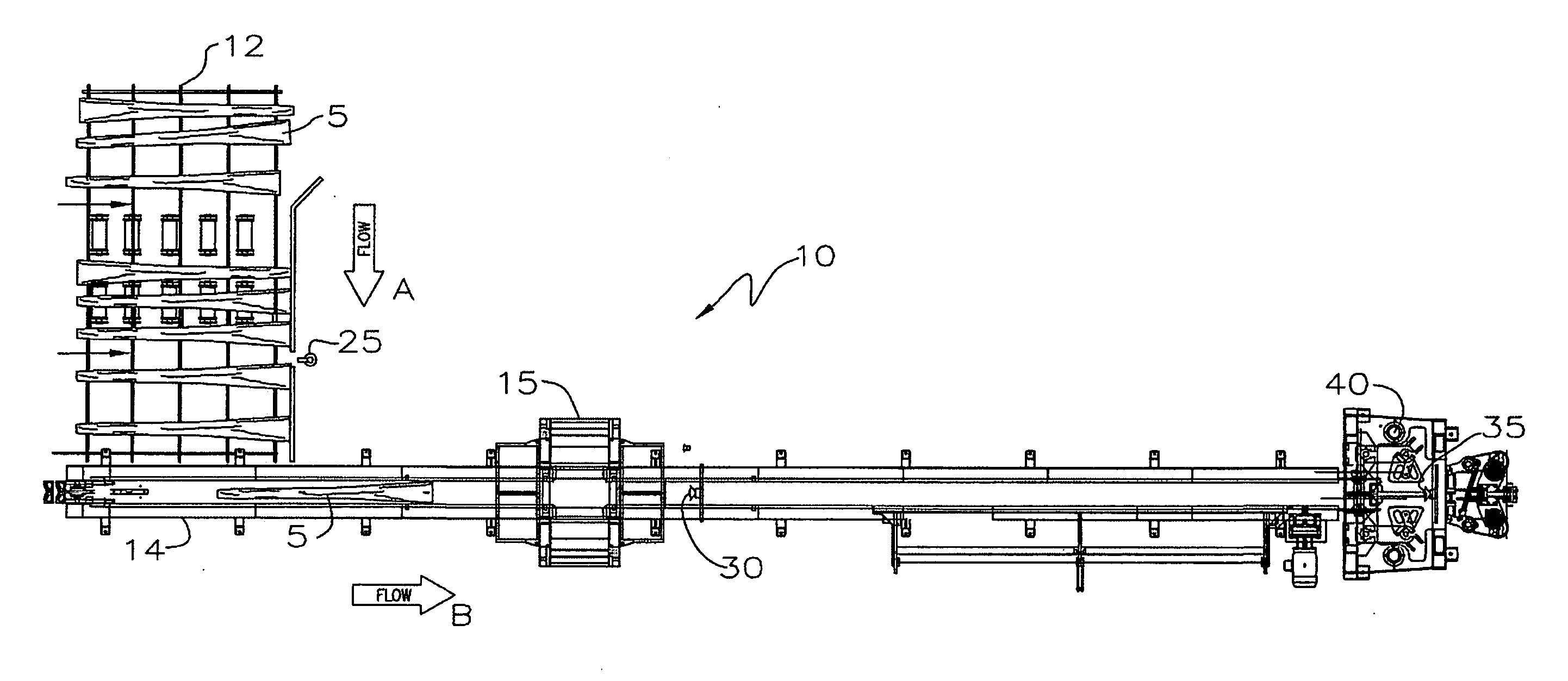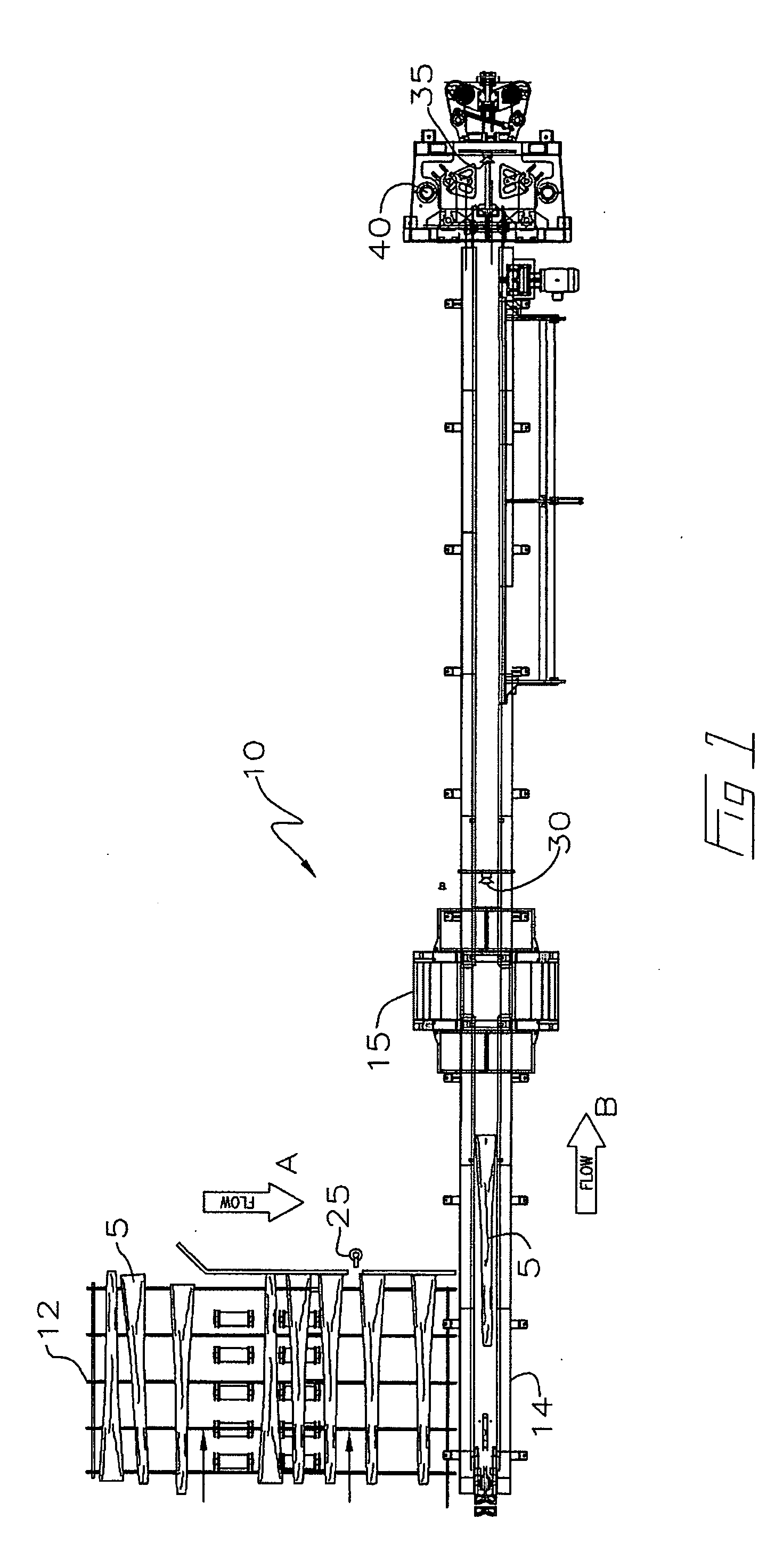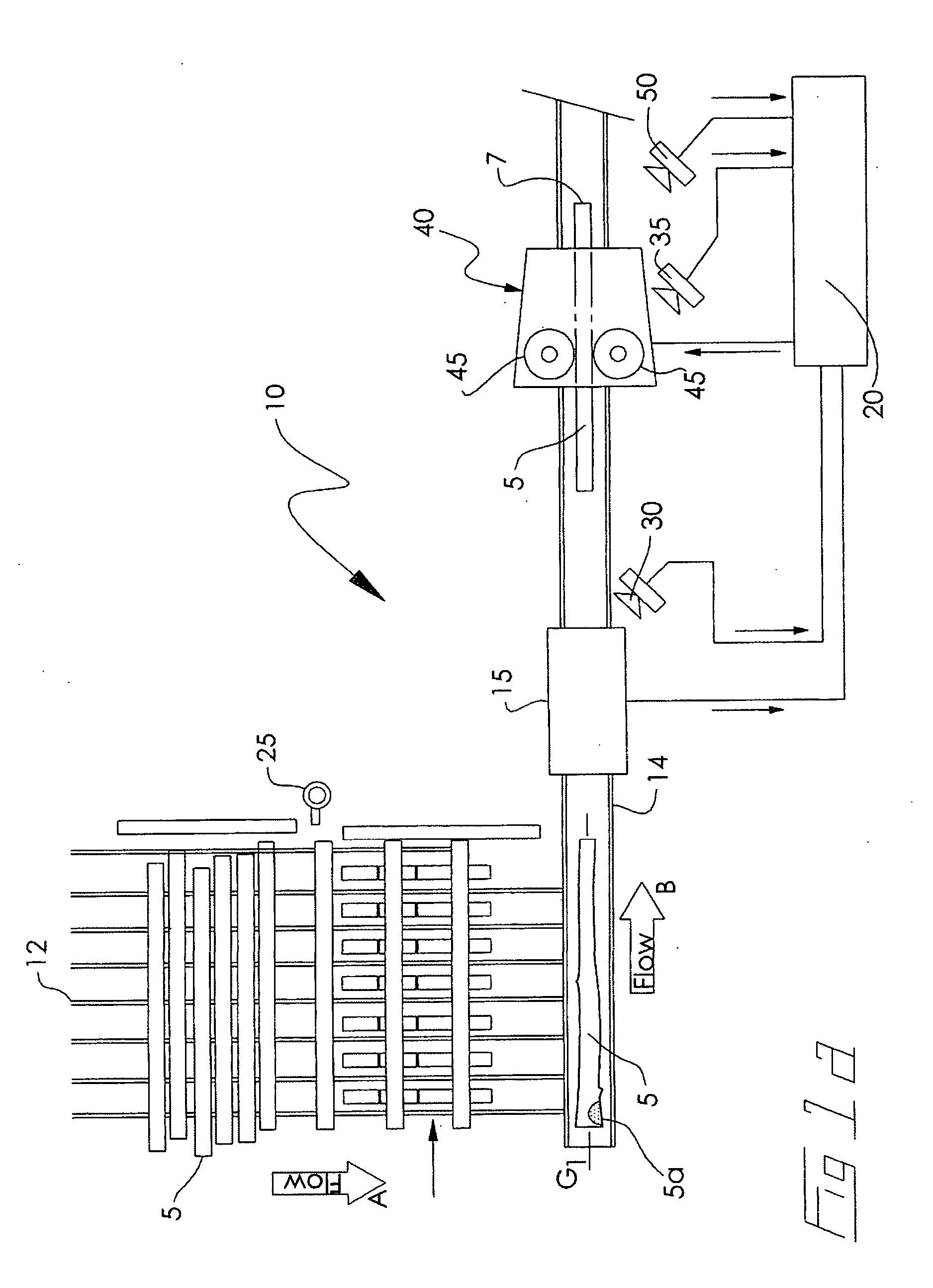System for positioning a workpiece
a workpiece and positioning technology, applied in the direction of process and machine control, program control, instruments, etc., can solve the problems of inability to properly rotate the workpiece, the accuracy of the log turning method is not accurate, and the lumber recovery rate is significan
- Summary
- Abstract
- Description
- Claims
- Application Information
AI Technical Summary
Benefits of technology
Problems solved by technology
Method used
Image
Examples
Embodiment Construction
[0023] With reference to the Figures wherein similar characters of reference denote corresponding parts in each view, a system 10 according to the present invention includes a scanner / optimizer 15, a processor 20, a marking device 25, a first and a second mark orientation identifying means 30 and 35, and a turning mechanism 40.
[0024] As seen in FIGS. 1 and 1a, a plurality of logs, referred to herein alternatively as workpieces 5, located on an infeed 12 are transported by suitable means, such as a chainway or other conveyor, in downstream direction of flow A on a feedpath towards a conveyor 14. Marking device 25 mounted along infeed 12 makes or places a mark 28 on each workpiece 5. Alternatively, marking device 25 may be positionable along conveyor 14 so that marking device 25 places mark 28 on workpiece 5 prior to workpiece 5 passing through scanner / optimizer 15. In one embodiment, not intended to be limiting, marking device 25 is a spray paint marking device for placing a visuall...
PUM
 Login to View More
Login to View More Abstract
Description
Claims
Application Information
 Login to View More
Login to View More - R&D
- Intellectual Property
- Life Sciences
- Materials
- Tech Scout
- Unparalleled Data Quality
- Higher Quality Content
- 60% Fewer Hallucinations
Browse by: Latest US Patents, China's latest patents, Technical Efficacy Thesaurus, Application Domain, Technology Topic, Popular Technical Reports.
© 2025 PatSnap. All rights reserved.Legal|Privacy policy|Modern Slavery Act Transparency Statement|Sitemap|About US| Contact US: help@patsnap.com



